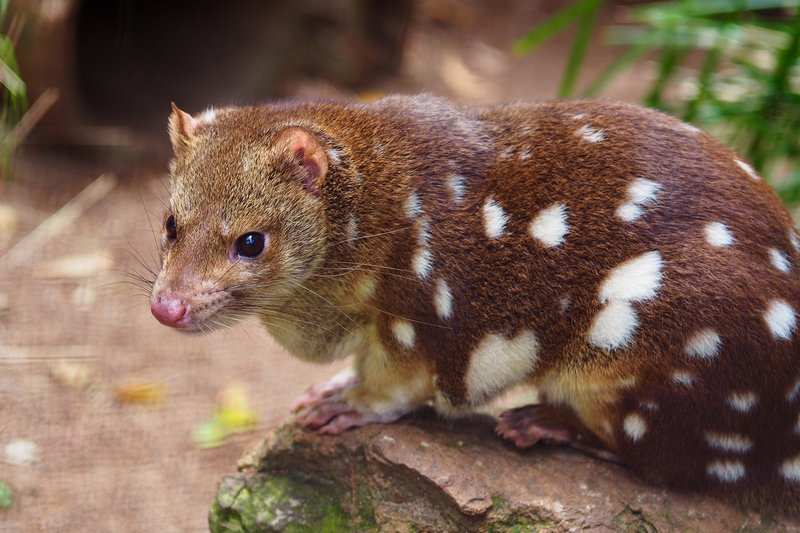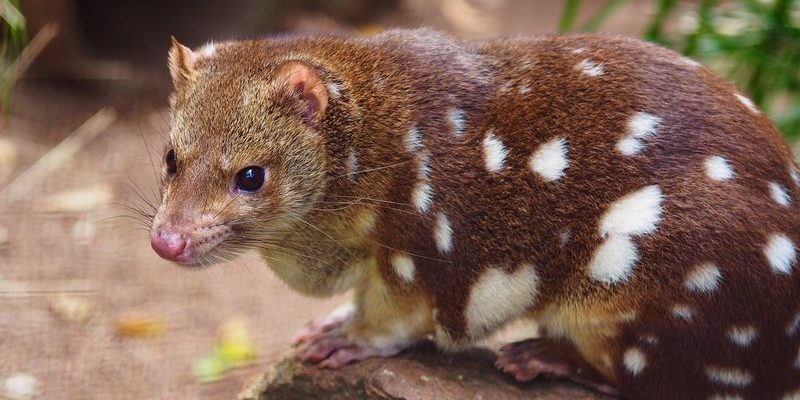
The quoll, often overshadowed by Australia’s more famous fauna, belongs to the Dasyuridae family. This family includes various small to medium-sized carnivorous marsupials. With their striking coats adorned in white or cream spots, quolls are not only charming but have a unique evolutionary journey. Understanding this journey can shed light on their current status in the wild and the conservation challenges they face.
What Are Quolls and Their Unique Features?
Quolls are often referred to as Australia’s native cats. They come in four species: the Eastern, Spotted-tailed, Northern, and Western quolls. Each one has its own distinct habitat preferences and behaviors. For instance, the Eastern quoll is often found in forests and areas with thick undergrowth, while the Spotted-tailed quoll prefers more open woodland settings.
These marsupials are nocturnal hunters, which means they come alive at night, prowling the underbrush for food. Their diet primarily consists of insects, small mammals, and birds. You might find it interesting that quolls have an incredible sense of smell—much like the way a bloodhound tracks a scent. It helps them locate prey even in dense vegetation.
One of the most striking features of quolls is their fur. With a rich, chocolate-brown or black coat sprinkled with white spots, they’re quite the sight! These spots not only serve a decorative purpose but can act as camouflage, helping them blend into their environment while hunting or avoiding predators.
Where Quolls Fit in the Marsupial Family Tree
To understand the evolutionary history of quolls, we need to take a step back and look at their family tree. Quolls belong to the monophyletic group Dasyuromorphia, which includes all the dasyurid marsupials. This group is believed to have originated around 60 million years ago.
Here’s an interesting thought: if you think of this group as a family reunion, quolls would be the branch that stands out the most. They share a common ancestor with other carnivorous marsupials, like the Tasmanian devil. However, they have charted their own path over millions of years, adapting to varied habitats across Australia and New Guinea.
Due to environmental changes and human impacts, quolls have seen fluctuations in their populations. While they thrived in different environments, it’s their adaptability and resilience that have allowed them to persist through many challenges.
The Role of Quolls in Their Ecosystem
Quolls are more than just cute faces; they play a vital role in their ecosystems. As predators, they help control the populations of insects and small mammals. This balance is crucial for maintaining healthy ecosystems. Think of them as nature’s little pest controllers, helping to prevent overpopulation of rodents and other small creatures.
Their hunting skills also benefit the food web. By keeping certain species in check, quolls indirectly support the survival of plants and other animals. The ripple effects of their presence can be quite extensive.
However, their role is increasingly threatened by habitat loss, feral animals, and climate change. The decline in their populations can lead to imbalances in the ecosystems they inhabit. In this light, quolls are a reminder of how interconnected our world is—even small changes can have big consequences.
The Evolution of Quolls: From Prehistoric Times to Today
The evolutionary history of quolls is a fascinating tale that stretches back to a time when Australia was connected to other landmasses. Around 40 million years ago, the continent began drifting, isolating its unique fauna. Dasyurids, including quolls, adapted to different environments, leading to their current diversity.
During the prehistoric era, quolls roamed alongside larger marsupials, some of which are now extinct. Evidence suggests that quolls may have shared their environment with creatures like Diprotodon, a massive marsupial akin to a modern rhinoceros but much larger.
As Australia’s climate evolved, so did the quolls. They adapted to various environments, from rainforests to arid regions. Their ability to thrive in different habitats showcases their resilience and adaptability. But with changing climates and human encroachment, understanding this evolution helps us grasp the urgency of their conservation.
Threats to Quolls and Conservation Efforts
Sadly, quolls face numerous threats today. Habitat destruction is a significant challenge, with urban development, agriculture, and deforestation encroaching on their natural homes. Alongside habitat loss, quolls are also vulnerable to predators like feral cats and foxes, which predate on them and compete for food.
Conservation efforts are underway to protect quolls and their habitats. Programs aim to restore native vegetation and control feral predator populations. Local communities play an essential role in these efforts by supporting wildlife corridors and advocating for sustainable practices.
Additionally, research into quoll populations helps conservationists understand their behaviors and needs better. The more we know, the more effective we can be in protecting these remarkable animals.
The evolutionary history of quolls tells a story of adaptability, resilience, and ecological importance. As they navigate the challenges of a changing world, their tale serves as a reminder of the delicate balances within our ecosystems.
By understanding their history and the threats they face, we can play a part in their conservation. Whether through supporting local initiatives or simply spreading awareness, every action counts. Quolls are not just a piece of Australia’s biodiversity; they’re a part of our shared responsibility to protect the planet for future generations. So, the next time you think about Australia’s wildlife, remember—the quoll’s story is one worth telling.

